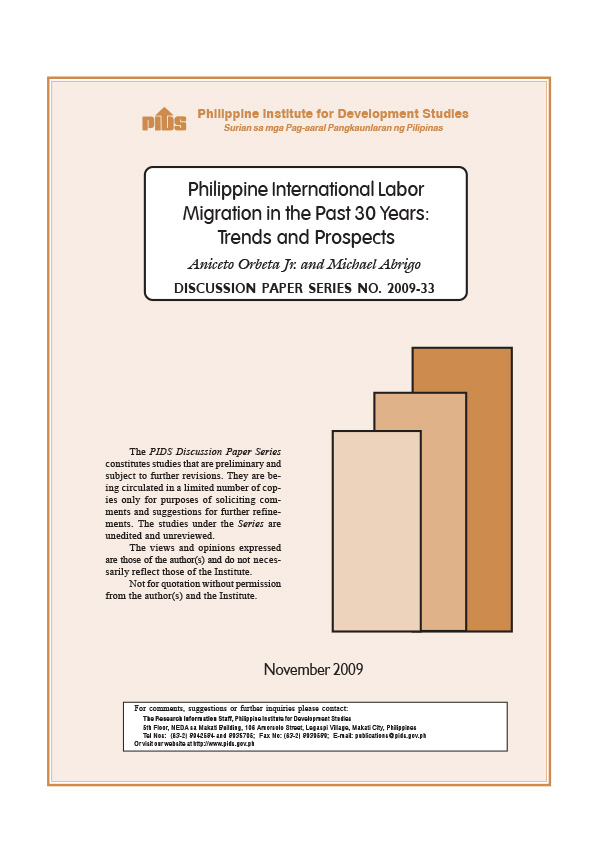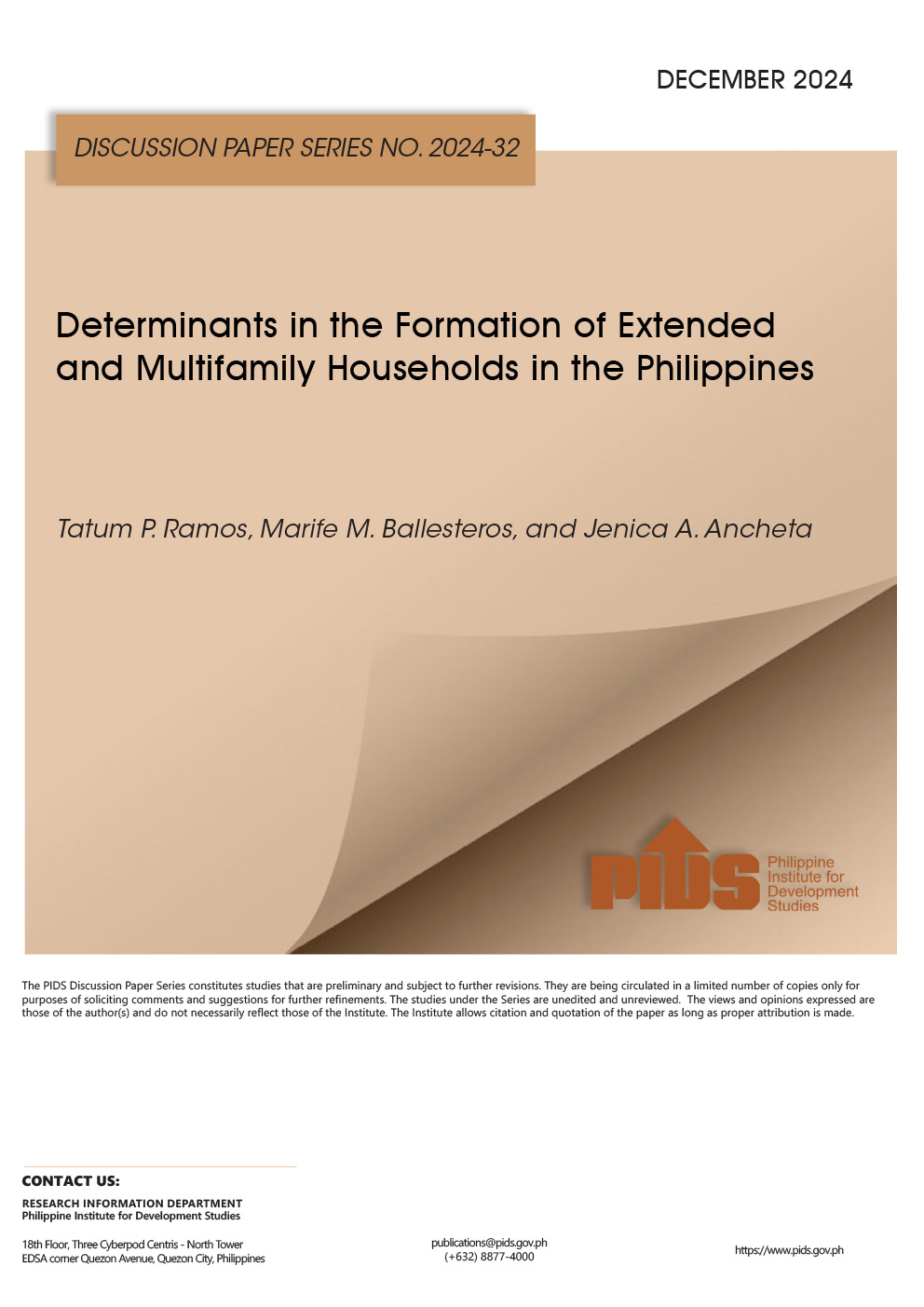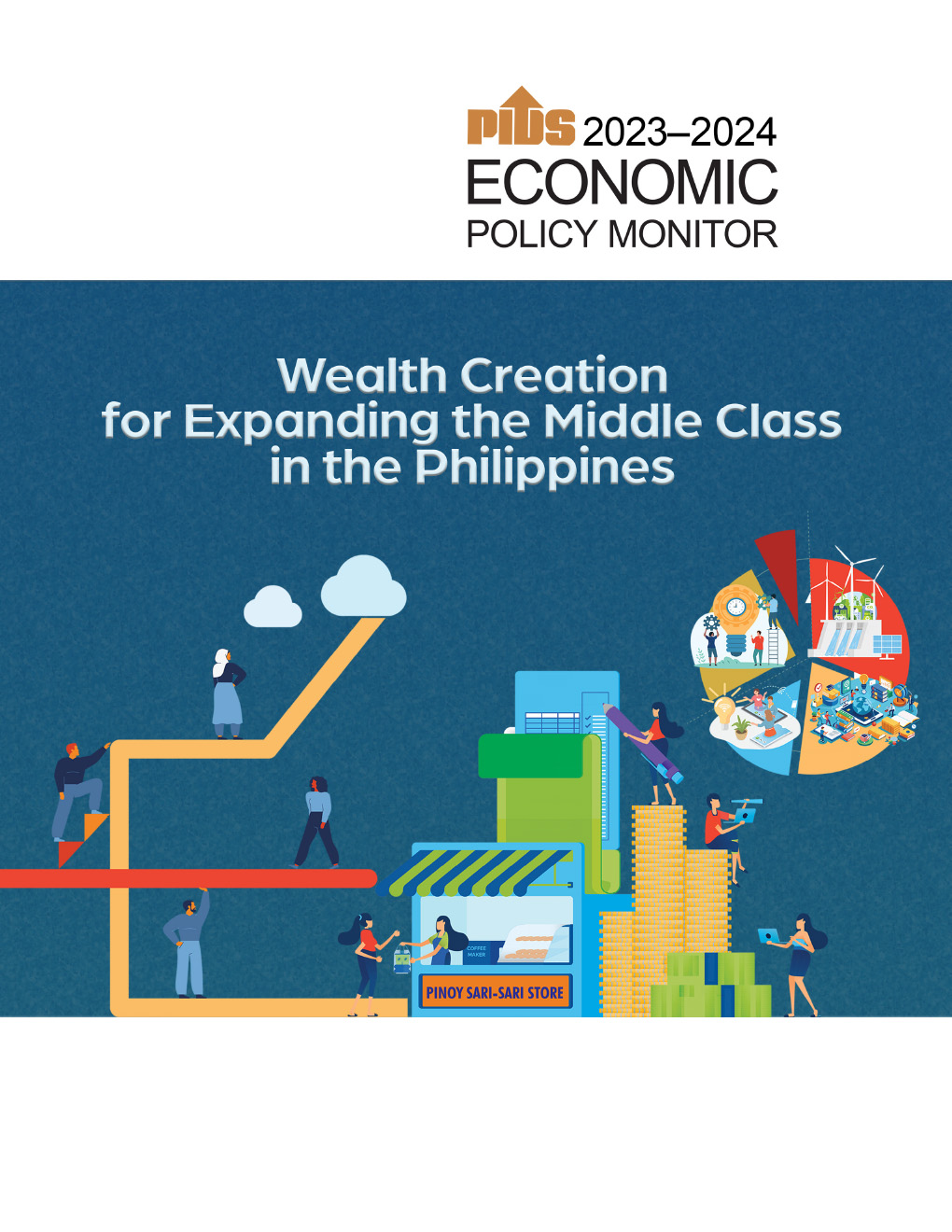The paper characterizes how international labor migration became an enduring feature in the country’s development. It presents data on the flow of temporary and permanent international migrant workers in the last thirty years. Characteristics such as destination, occupation, education, sex, and age are presented. Using historical movements and motivations, the study then presented the likely prospects of the Philippine international labor migration market considering domestic and the global labor market developments. Long-term and short-term prospects were discussed and economic, demographic, political, and environmental factors were considered as factors affecting the future flow of international migrant workers.
Citations
This publication has been cited 5 times
- Manalo, Jaime A. and lske van de Fliert. 2013. Push and pull factors in rural Filipino youth’s outmigration from agricultural communities. Asian Journal of Agriculture and Development 10, no. 2, 1-15. Southeast Asian Regional Center for Graduate Study and Research in Agriculture (SEARCA).
- Orbeta, Aniceto Jr. C. and Michael Ralph M. Abrigo. 2011. Managing international labor migration: The Philippine experience. Discussion Papers DP 2011-33. Philippine Institute for Development Studies.
- Orbeta, Aniceto Jr. C. and Michael Ralph M. Abrigo. 2011. Managing international labor migration: The Philippine experience. Discussion Papers DP 2011-33. Philippine Institute for Development Studies.
- Orbeta, Aniceto Jr. C. and Michael Ralph M. Abrigo. 2013. Managing international labor migration: The Philippine experience. Philippine Journal of Development PJD 2011, 38, nos. 1-2. Philippine Institute for Development Studies.
- Racelis, Rachel H., Michael R.M. Abrigo, and J.M. Ian Salas. 2015. Financing consumption over the lifecycle and overseas workers’ remittances: Findings from the 1999 and 2007 Philippine national transfer accounts. The Journal of the Economics of Ageing, 5(C), 69-78. Elsevier.













